Happy 4th. Everyone be safe and don't lose any body parts with fireworks. We model builders need all of our body parts intact.
I hate to agree with you, but the hardware store was a much more challenging, and thus rewarding, endeavor. I'm kind of grunting through the car model. Frankly, I'm spoiled. Between the sophistication of the modern kits, and the intellectual challenge of the scratch-builds, a 1980s car kit just doesn't excite me that much any longer. That said, I never leave things unfinished and I will finish this also.
The day started with wanting to try the decals again with the laquer coating. I chose to put on the big "Kodak" on the hood, only to find that somehow, I got gloss black paint on to the final finish. Instead of attempting to remove it with solvents and destroying the underlying finish, I used Novus Plastic Polish and a lot of elbow grease and rubbed it out while mostly preserving the finish. The big decal was going to cover a lot of area so it could hide any other blemished.

Once again, the decal started splitting apart, and to make matters worse, the laquer was washing off the decal in a white film. I perservered and got the pieces to fit together.
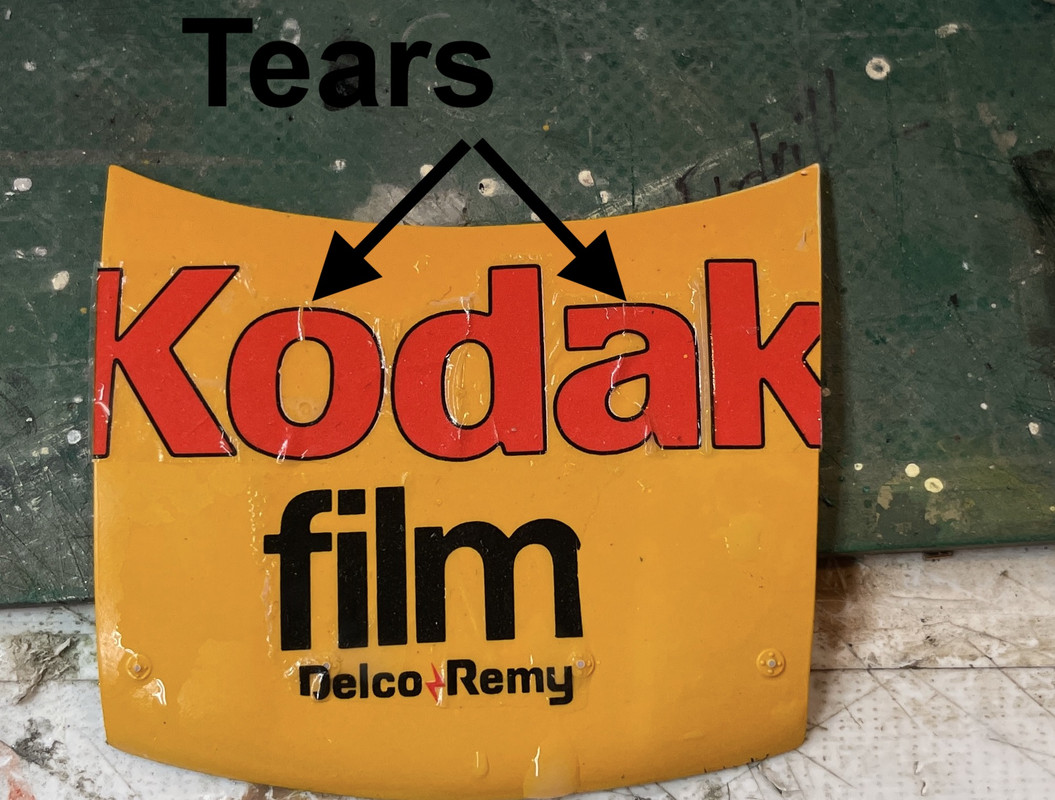
coating the decals again with Micro-Sol Decal Coating Liquid to try and prevent the breakup that I'm experiencing. I coated with Micro-Set and let it dry. The results ain't so hot, but they may be okay after another gloss sealing coat. I don't about you, but it makes me very unhappy to have a finish ruined by decals after spending a coupld of days laying it down.
Here's the decal mostly cured at the session's end.
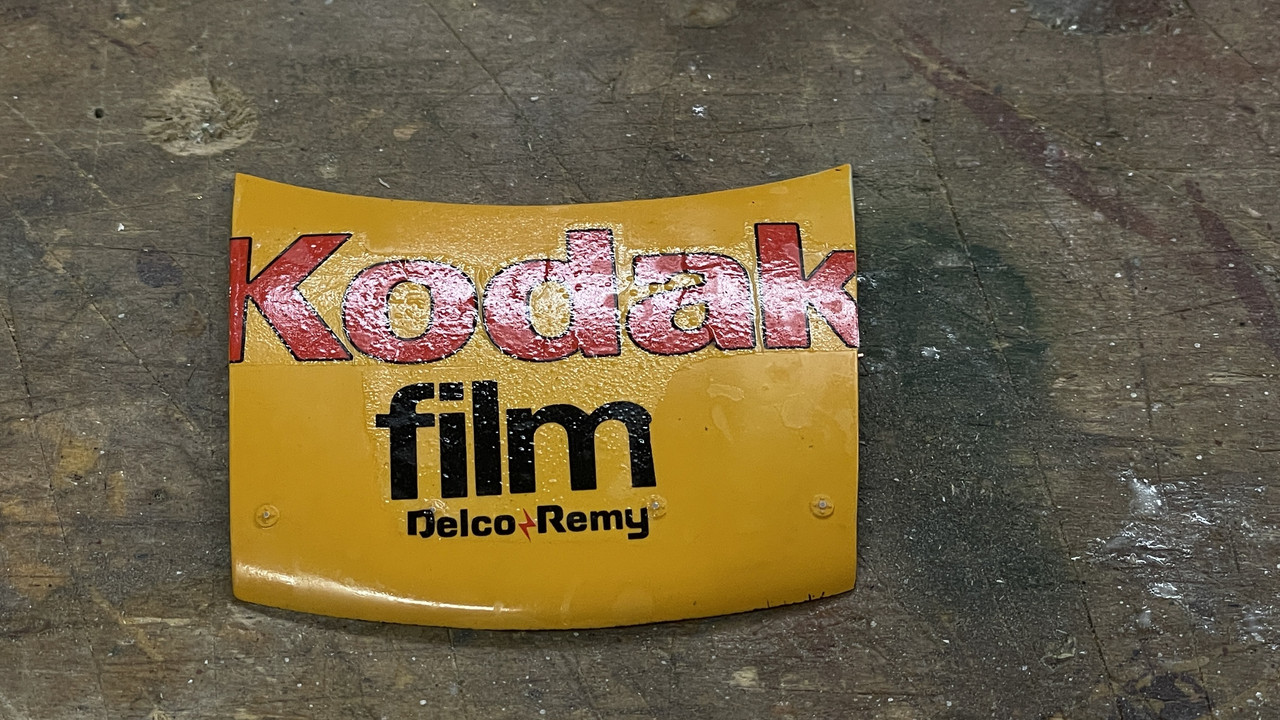
I looked into the possibility of substituting rear springs for the plastic ones, but that ship has left the dock. I did have springs of the correct diameter in a collection of springs I bought a few years ago from Amazon, but should have thought of this earlier. In another forum a reader wondered why I hadn't changed out the springs. I hadn't even thought of it.
To try and forestall further decal disintegration, I coated the sheet with some MicroSol Decal Coating Liquid. While this was curing I started working on the wheels. They have a terrible mold line right done the center of the tire. I cut off what I could with a #11 and then used my MicroMark power hand sander and other abrasives to make the tires look more like tires.
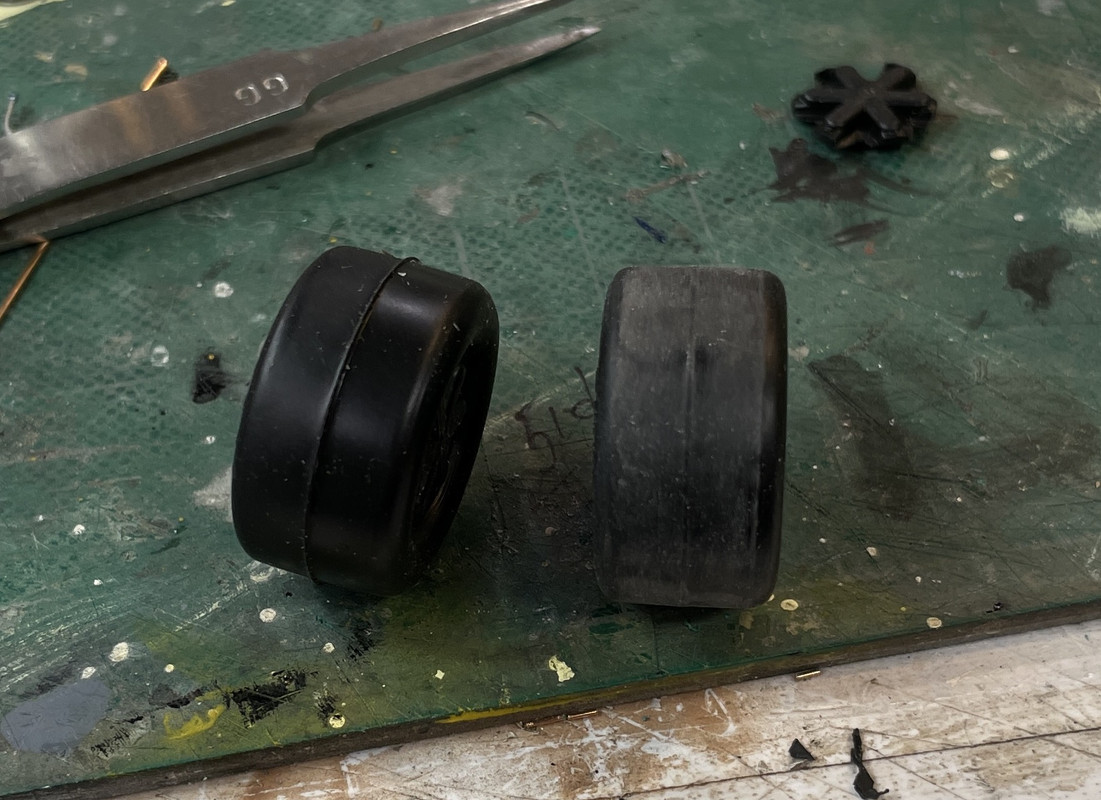
I also attempted to paint the "Goodyear" logo on tires since the car's photos clearly showed white lettering. It's passable, but not great.
I also got the radiator installed with the hose painted with Molotow decanted chrome. If you repeatedly depress the nib end of the Molotow pen, eventually a big blob will leak out and you can use it with a brush. It can also complete destroy a model if that blob comes out when you're using it as a pen. I know this because, Brian Bunger, the owner of Scale Reproductions, Inc. (one of the best hobby shops in the USA) did this on a beautiful 58' Chevy Impala model when painting the trim.
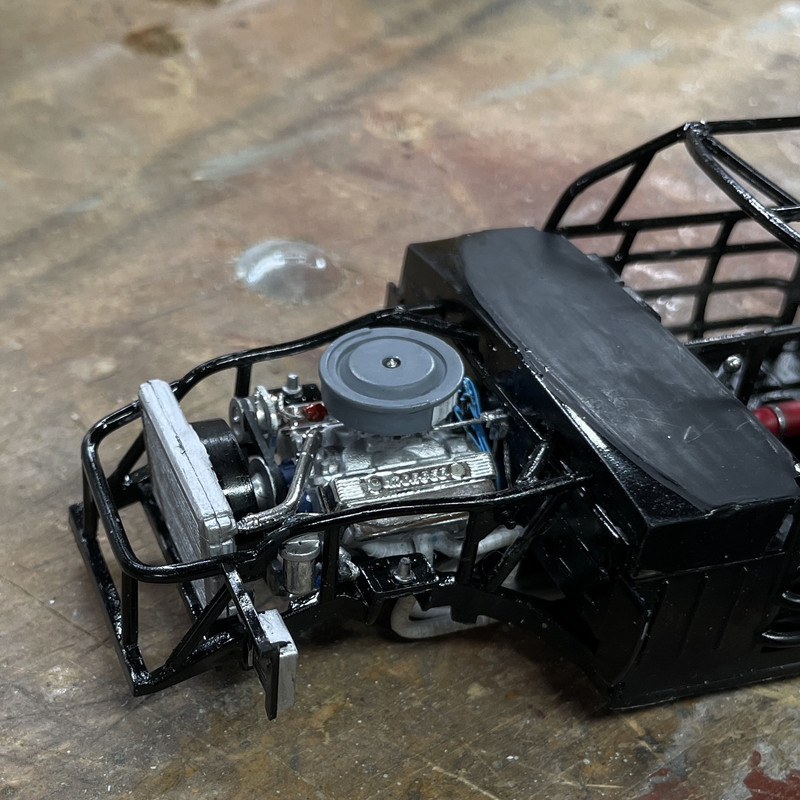
And then while attempts to assemble one of the wheels with the inner and outer halves, I dropped an inner rear wheel and its disc brake. The disc brake was sitting on the floor directly below my feet, but the wheel was no where! I mean NOWHERE!!! I crawled around on the cellar floor, expanded the search area, explored places where "It couldn't possibly had gone", and found nothing. I know round things can roll, but come on man, it should still be in the room... right?
I searched for a good 10 minutes. The part is no longer in this dimension. That's the only possibl e explanation. In fact, I actually didn't hear it land. Small parts can reach relativistic velocities and they're falling and transit to the other dimension before hitting the floor. Go ahead. Prove me wrong!
So... in desparatiion, and always having a way out most jams, I'm in the process of turning a new one out of aluminum. Luckily, the inner wheel is just a plain cylindrical shape, unlike the outer half with the spokes, compound curves, lugnuts, etc.
This is like the one that diappeared.
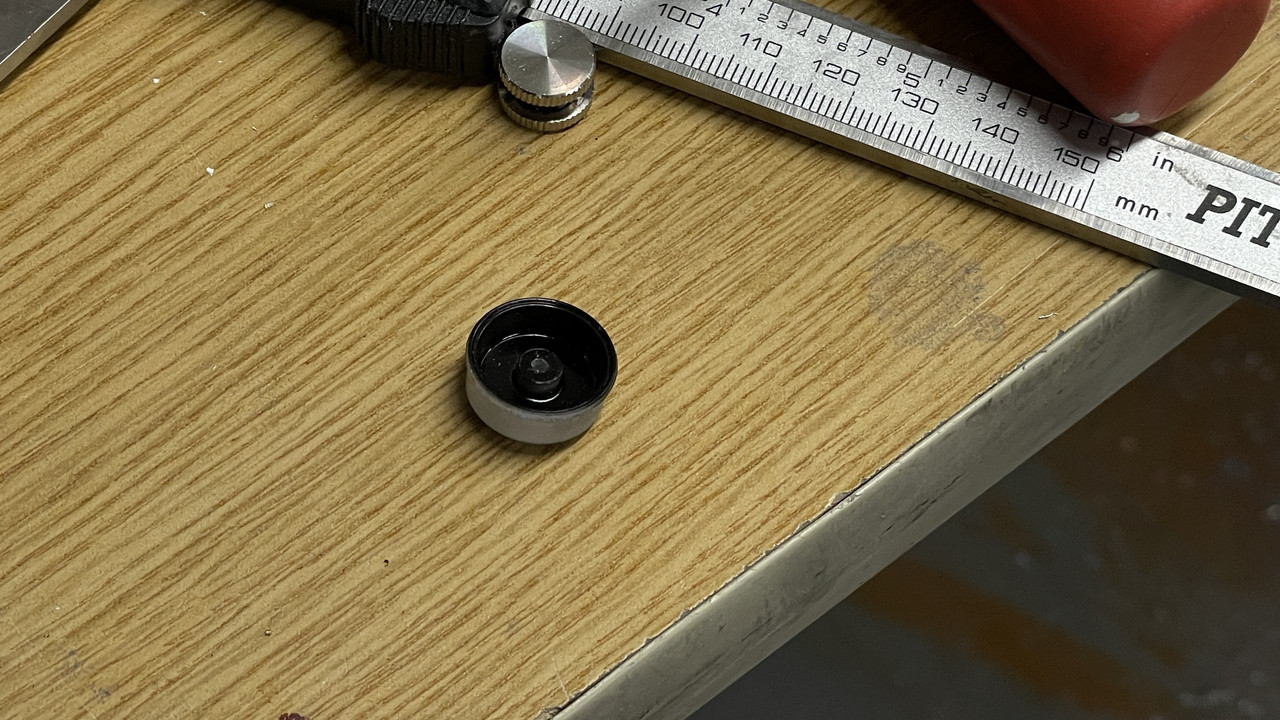
And here's the stock being prepared in my miniature, 40 year-old Taig Lathe. The lathe is a godsend and has gotten me out of a lot of jams, too many to count. It's capacity isn't much, but within that envelope it can work wonders.
I chucked the aluminum in a 4-jaw independent chuck because the stock had a large overhang (I hacksawed off the excess) and I needed a very secure clamping. The Taig 3-jaw self-centering chuck has aluminum jaws and can't really tighten as much as I needed here. I used a dial indicator to true up the mount before turning. I can usually work within a couple of thousandths precision with the machine.
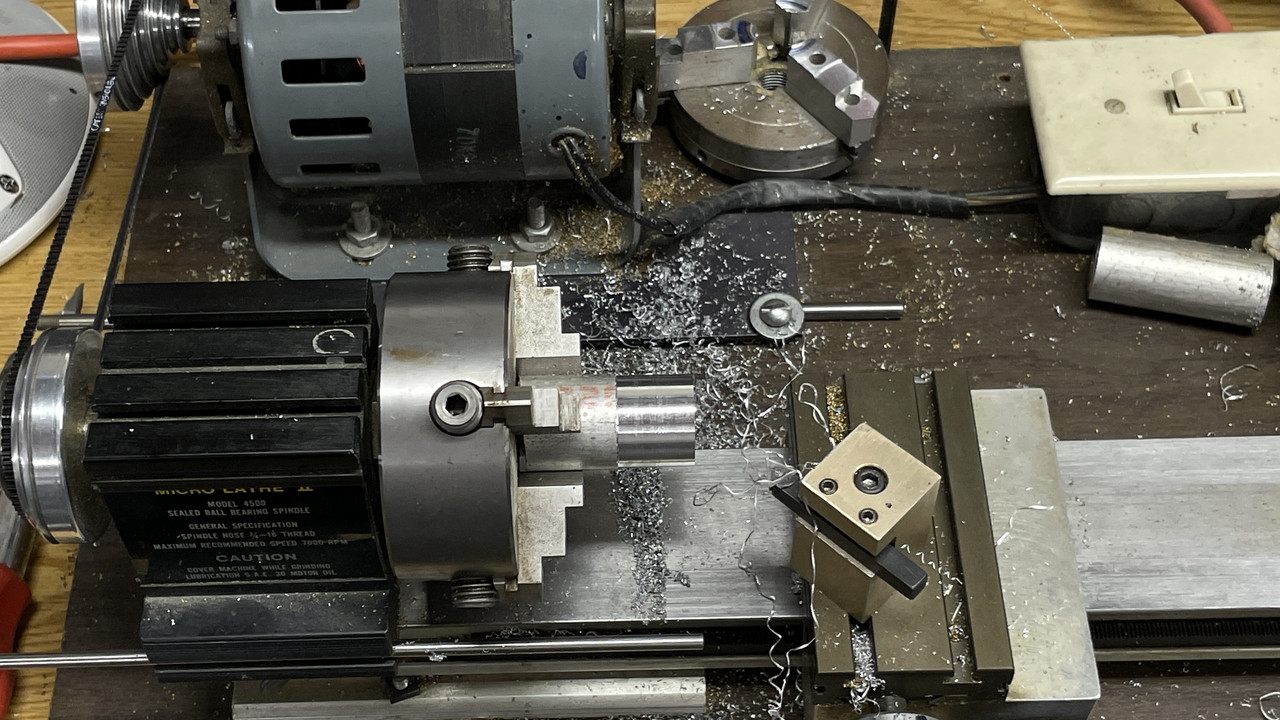
I may have more time in the shop today and I will post the rest of this small machining project.